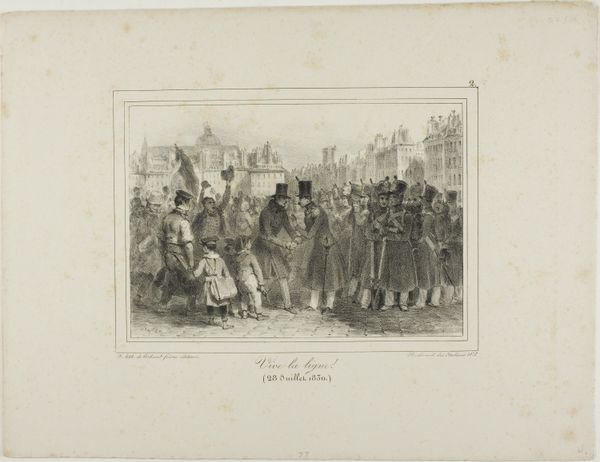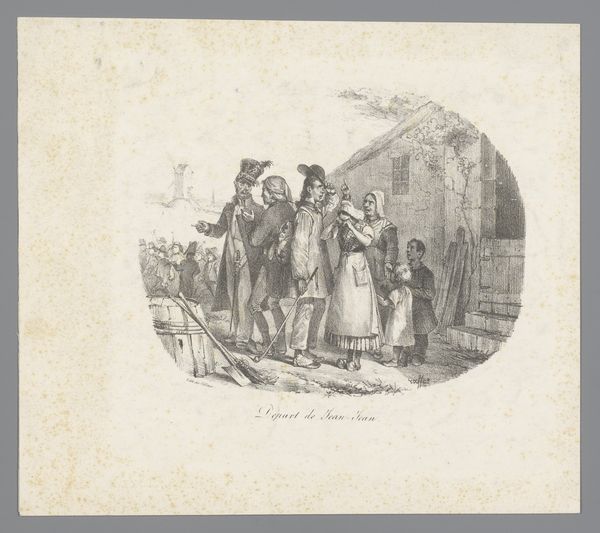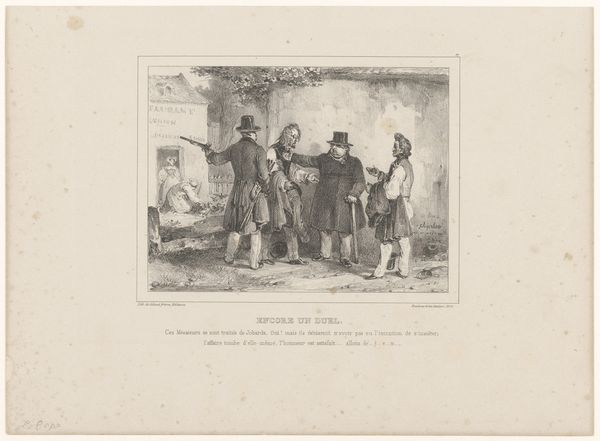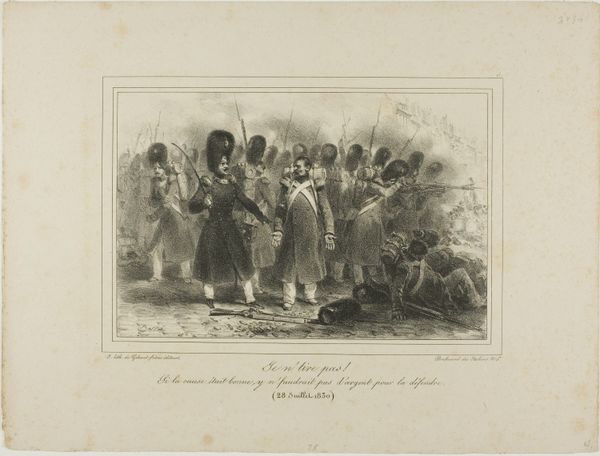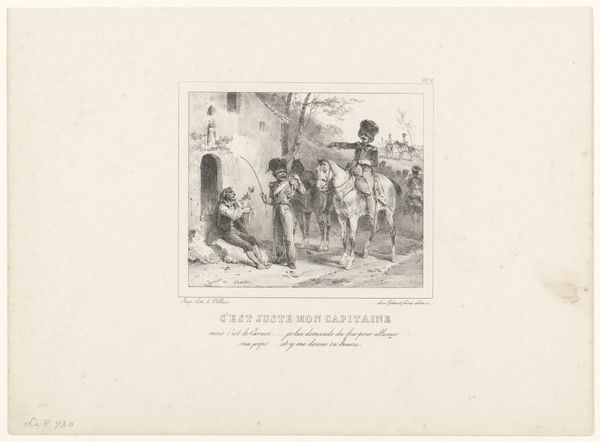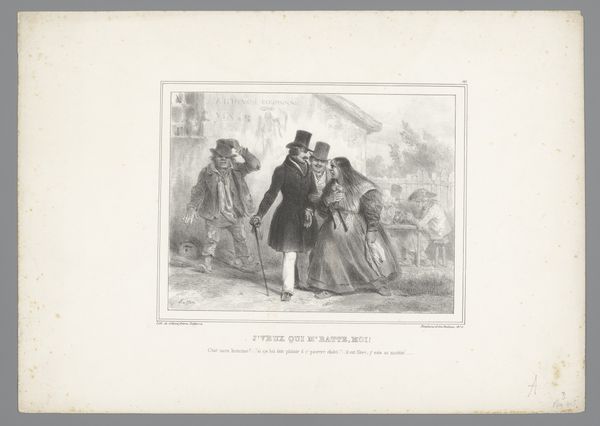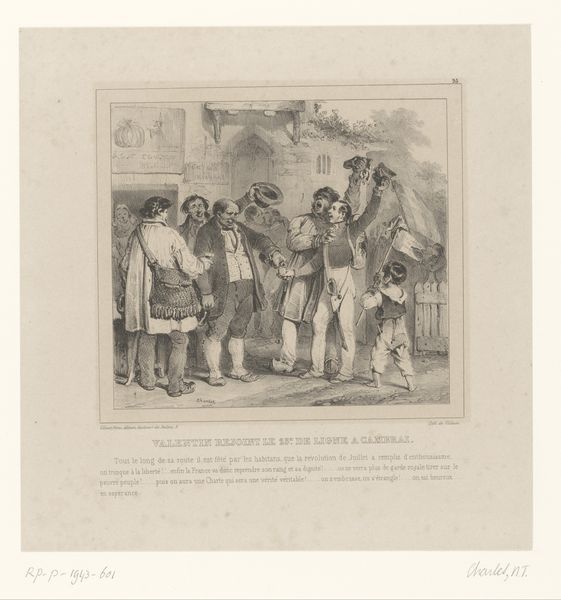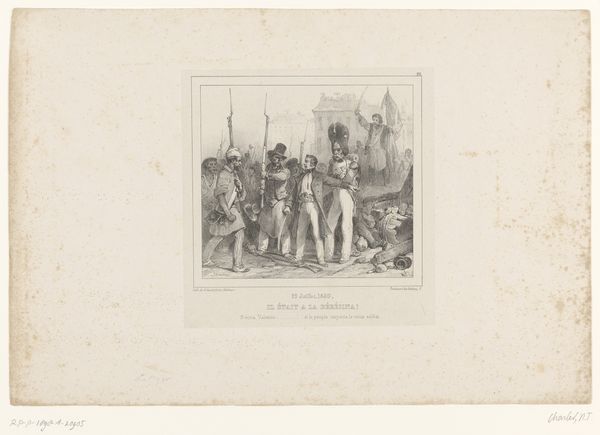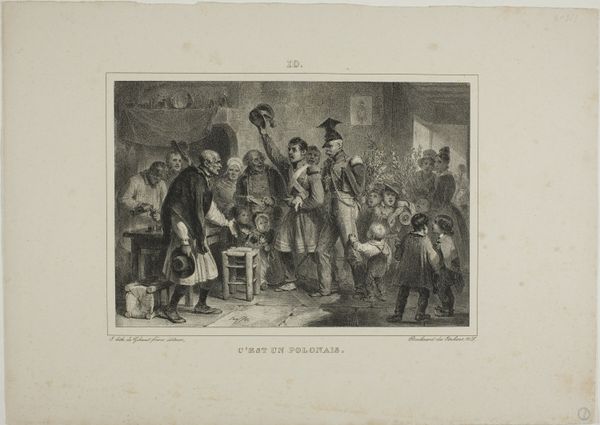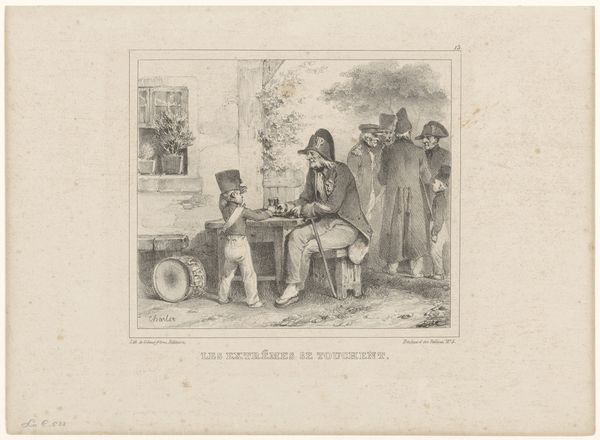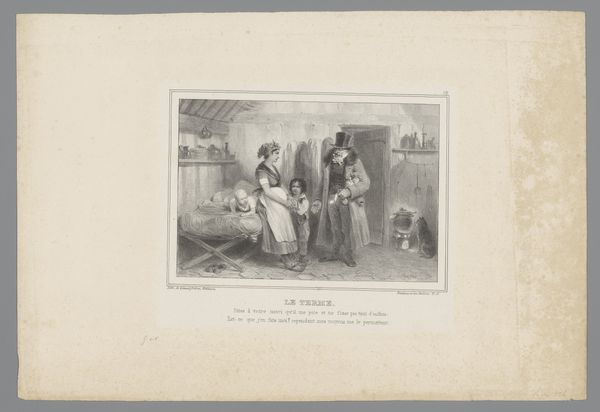
drawing, lithograph, print, paper
#
drawing
#
narrative-art
#
lithograph
# print
#
paper
#
romanticism
#
park
#
genre-painting
Dimensions: height 288 mm, width 420 mm
Copyright: Rijks Museum: Open Domain
Curator: This lithograph from 1836, by Auguste Raffet, titled "Neef komt oom tegen in druk bezocht park," translates to "Nephew meets uncle in a crowded park." What strikes you most about this image? Editor: The immediate impression is the composition; the cluster of men in the background and these almost theatrical central figures – very staged! It feels like a scene pregnant with societal tension. Curator: Raffet made prints which served an important social function. His works helped constitute a sense of national identity, as the depicted park functioned as a stage for middle class performances of identity. This resonates with my understanding of class and gender at this period, because the scene portrays figures attempting to enact an image of civility. The meeting between the uncle and nephew would play into the visual performance and performative actions. Editor: It's interesting you read this as performative rather than, say, an intimate encounter made public. What do you read from the text inscribed under the image? The encounter between these men has clearly attracted the gaze of not only the surrounding crowd, but also the viewer! Curator: I feel like my approach comes from seeing the artist's process in broader sociological context; Raffet frequently reproduced scenes of middle-class sociability that were easily accessible. His works often carried politically charged commentary in depicting gendered identities. He presents us with a very specific moment that seems both calculated and intimate – what is produced, how are roles assumed by whom, who gets access? All pertinent to questions of representation. Editor: Certainly, understanding how class is negotiated through public space enriches our view of nineteenth-century social dynamics. This image perhaps opens to us an understanding of gender roles, specifically what masculine relations would’ve signified at the time, which I can investigate through the means by which such lithographs achieved visibility, reproduction, and distribution, within the art market and within public political discourse at the time. Curator: Indeed. These visual records can be seen as complex sites of production and dissemination, making the cultural fabric all the more meaningful to interpret even to this day. Editor: It really reveals how something seemingly straightforward can actually prompt reflection on many things from interpersonal relations to distribution networks and cultural norms.
Comments
No comments
Be the first to comment and join the conversation on the ultimate creative platform.

